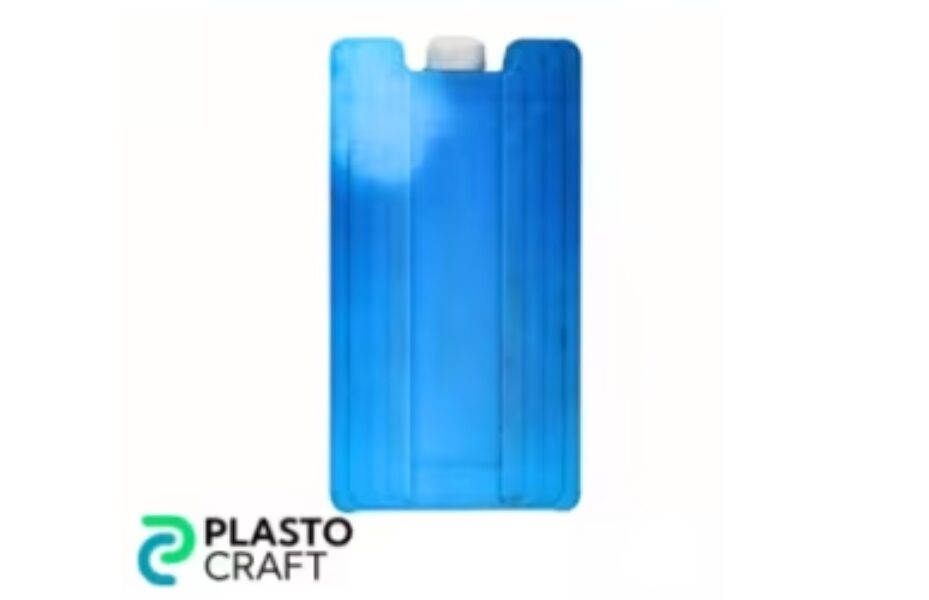Can You Reuse HDPE Plastic Bottles for Drinking Water Safely?

When it comes to reusing plastic bottles, particularly those made from High-Density Polyethylene (HDPE), many people wonder if it’s safe for long-term drinking water storage. At first glance, HDPE plastic seems durable, lightweight, and convenient — but does it remain safe when reused multiple times? In this comprehensive guide, we’ll explore the safety, health risks, and best practices for reusing HDPE bottles to ensure your drinking water remains clean and uncontaminated.
What Is HDPE Plastic and Why It’s Commonly Used
High-Density Polyethylene (HDPE) is a thermoplastic polymer made from petroleum. It’s known for its high strength-to-density ratio, chemical resistance, and low moisture absorption. HDPE is used in countless applications, from milk jugs, water containers, detergent bottles, to industrial pipes.
HDPE is classified as plastic #2, and it’s one of the safest and most environmentally friendly plastics available. It doesn’t leach harmful chemicals under normal conditions, which is why it’s approved by the FDA and the U.S. Environmental Protection Agency (EPA) for food and beverage contact.
Why HDPE Plastic Is Considered Safe for Drinking Water
HDPE plastic is non-toxic, BPA-free, and phthalate-free, making it a preferred material for reusable water containers. Its chemical stability ensures that, unlike some other plastics, it doesn’t react with water or most substances stored inside.
Additionally, HDPE has a high melting point (around 120°C or 248°F), which makes it more resistant to heat compared to low-density plastics. This property helps prevent chemical migration, which occurs when substances in the plastic leach into liquids, especially under high temperatures.
When used correctly, HDPE bottles can safely store drinking water for months without altering taste or quality.
Potential Risks of Reusing HDPE Bottles
Although HDPE is durable, reusing the same bottle repeatedly can lead to certain issues that compromise safety and hygiene:
1. Microbial Contamination
After repeated use, bacteria and mold can develop inside the bottle, particularly around the cap and mouth area. HDPE bottles are often not designed for easy deep cleaning, which allows microbial colonies to grow over time. These microorganisms can contaminate the water and cause gastrointestinal illnesses.
2. Physical Degradation
Over time, scratches and micro-cracks form inside the bottle, especially if it’s frequently washed or exposed to sunlight. These tiny imperfections can harbor bacteria and weaken the material, leading to gradual degradation.
3. Exposure to High Temperatures
HDPE should not be exposed to boiling water or extreme heat. When heated beyond its stability point, HDPE can begin to soften and release trace chemicals. For this reason, it’s not recommended to pour hot or boiling water into HDPE bottles, as it can deform the plastic and compromise its structure.
4. Leaching Under Poor Conditions
While HDPE is stable, prolonged exposure to UV light, extreme temperatures, or chemical detergents can accelerate polymer breakdown. This may increase the likelihood of trace leaching, although still minimal compared to other plastics like PVC or Polycarbonate.
If you plan to reuse HDPE bottles for drinking water, following best safety practices will help prevent contamination and maintain structural integrity.
1. Clean Regularly and Properly
Use warm (not boiling) water, mild soap, and a bottle brush to scrub the inside of the container thoroughly. Rinse several times to remove any residue. For disinfection, you can use a diluted bleach solution (1 teaspoon of unscented household bleach per quart of water), then rinse well with clean water.
2. Keep Bottles Away from Direct Sunlight
UV rays can degrade HDPE over time, causing brittleness and weakening its structure. Always store HDPE water containers in a cool, shaded area to preserve their strength and prevent bacterial growth.
3. Inspect for Cracks or Odors
Before reusing, inspect the bottle for visible damage, discoloration, or lingering odors. If the bottle looks warped or has an unpleasant smell even after cleaning, it’s best to recycle and replace it.
4. Avoid Storing Hot Liquids
Never pour boiling or very hot water into HDPE bottles. The material can warp or partially melt, increasing the risk of chemical migration. Always allow water to cool to room temperature before filling.
5. Use for Short-Term Storage
HDPE bottles are safe for short- to medium-term water storage (from days to a few months). For long-term emergency storage, choose food-grade HDPE containers specifically labeled for that purpose, which are thicker and more UV-resistant.
How Long Can You Safely Reuse an HDPE Bottle?
The lifespan of a reusable HDPE bottle depends on its usage conditions and maintenance. Under normal use, an HDPE bottle can be safely reused for 3 to 6 months before it begins to show wear. However, if used exclusively for cold water, cleaned regularly, and kept away from sunlight, it can last even longer.
Still, it’s essential to note that HDPE bottles are not meant to be reused indefinitely. Once signs of degradation appear—such as cloudiness, rough surfaces, or odor retention—it’s time to replace them.
HDPE vs. Other Plastics: Which Is Safer?
When compared to other common plastics, HDPE remains one of the safest choices for drinking water.
| Plastic Type | Code | BPA-Free | Recommended for Reuse | Comments |
|---|---|---|---|---|
| HDPE | #2 | Yes | Yes (with care) | Strong, non-toxic, recyclable |
| PET | #1 | Yes | No | Can leach with reuse |
| PVC | #3 | No | No | Contains harmful chemicals |
| LDPE | #4 | Yes | Limited | Flexible, less durable |
| PP | #5 | Yes | Yes | Heat-resistant, safe for hot liquids |
| PS | #6 | No | No | Can release styrene |
| Polycarbonate | #7 | No | No | Contains BPA |
From this comparison, HDPE and PP (Polypropylene) stand out as the safest and most reusable options for water storage.
Environmental Benefits of Reusing HDPE
Aside from safety, reusing HDPE bottles contributes to reducing plastic waste and lowering environmental impact. HDPE is 100% recyclable, and its recycling process requires less energy compared to producing new plastic from raw petroleum.
By extending the life of HDPE bottles, we reduce the demand for new plastic production and minimize the amount of plastic entering landfills and oceans.
When to Replace Your HDPE Bottle
Replace your HDPE bottle immediately if you notice:
- Visible cracks or leaks
- Cloudiness or discoloration
- Persistent odors even after washing
- Deformation from heat exposure
- Loose or damaged caps
Recycling old bottles through a local HDPE recycling program ensures the plastic is repurposed responsibly into new products such as pipes, crates, or park benches.
Final Verdict: Is It Safe to Reuse HDPE Bottles for Drinking Water?
Yes — HDPE plastic bottles are safe to reuse for drinking water when properly maintained. They are one of the most stable, food-grade plastics available, offering excellent protection against contaminants and leaching. However, users must ensure regular cleaning, avoid heat exposure, and replace bottles periodically to maintain safety.
In summary, HDPE plastic remains a reliable and sustainable option for reusable water storage, provided it’s used with proper hygiene and care.
Winter Hacks: Best Ways to Prevent Water From Freezing in Your Round Igloo Cooler
When winter temperatures drop below freezing, keeping water from turning into ice becomes a real challenge — especially for those using round Igloo coolers for camping, outdoor work, or transporting liquids. Whether you’re storing drinking water, pet hydration supplies, or industrial fluids, preventing freezing can save you from frustration and equipment damage. In this guide, we reveal effective, science-backed methods to keep your water from freezing in an Igloo cooler during cold weather.
Why Does Water Freeze Inside an Igloo Cooler?
Although Igloo coolers are designed with insulated walls to maintain internal temperatures, they primarily protect against heat, not extreme cold. When ambient temperatures drop below 32°F (0°C), heat inside the cooler escapes gradually, allowing water molecules to solidify into ice. The insulation slows freezing but doesn’t completely stop it. To prevent this, we need to minimize heat loss and introduce controlled heat sources or insulating materials that keep temperatures above freezing for longer durations.
1. Use Warm (Not Hot) Water to Start
Before sealing your cooler, fill it with lukewarm water — around 40–50°F (4–10°C). This starting temperature gives your cooler a thermal advantage, as it takes longer for water to cool down to the freezing point. Avoid boiling water, as HDPE plastic coolers may deform or release odors when exposed to extreme heat. A slightly warm fill helps stabilize internal temperature and delays ice formation significantly.
2. Insulate the Cooler for Extra Protection
Even though Igloo coolers come insulated, adding external insulation layers can dramatically boost performance. Wrap your cooler with:
- Thermal blankets or sleeping bags
- Foam insulation boards
- Old towels or thick clothing
- Reflective emergency foil
This additional insulation reduces heat transfer and keeps the cooler’s core temperature more stable. For best results, ensure that the lid is tightly sealed, as most heat loss happens through the top.
3. Use Salt to Lower the Freezing Point
Adding salt to water is one of the oldest and most effective tricks to prevent freezing. Mixing a small amount of non-iodized salt (like rock salt) lowers the freezing point, keeping the water liquid even in sub-freezing temperatures. For example, a 3–5% salt solution can stay unfrozen down to around 27°F (-2.8°C). However, note that salty water isn’t drinkable — use this method only for non-consumable applications such as cleaning or equipment washing.
4. Store the Cooler in a Sheltered Area
The placement of your Igloo cooler can make all the difference. Avoid exposing it directly to cold winds and open air, which accelerate heat loss. Instead:
- Store it inside a tent, shed, or vehicle.
- Keep it off the ground using wood pallets, cardboard, or foam pads.
- Surround it with hay bales, snow, or other insulators to create a natural thermal barrier.
By minimizing exposure to the open cold, you extend the cooler’s ability to keep liquids from freezing overnight.
5. Add Heated Gel Packs or Warm Water Bottles
Reusable gel packs and hand warmers can be your best friends in the winter. Place a few heated gel packs inside the cooler to maintain internal warmth. Alternatively, use plastic bottles filled with hot water (not boiling) as heat sources. Place them strategically around the cooler’s edges to radiate warmth evenly. For added safety, wrap the bottles in a towel to prevent direct contact with cooler walls.
6. Use Chemical Heat Packs or Exothermic Warmers
For long outdoor trips or construction sites, chemical heat packs — commonly used in emergency kits — can help. These packs generate steady heat for 6–12 hours and are safe to use inside insulated containers. Choose non-flammable, non-toxic varieties to avoid chemical risks. Place a few near the bottom of the cooler and cover with cloth layers to distribute warmth evenly.
7. Avoid Opening the Cooler Frequently
Every time you open your Igloo cooler, warm air escapes and cold air enters, accelerating heat loss. To maintain internal warmth:
- Plan your access times.
- Retrieve everything you need at once.
- Keep contents organized for quick retrieval.
Limiting the number of openings can extend the cooler’s ability to maintain above-freezing temperatures for several additional hours.
8. Use Thermal Mass to Your Advantage
Water freezes faster in smaller quantities. To prevent this, consider storing larger volumes of water in a single container. The higher the water mass, the longer it takes to lose heat. You can also add dense materials like rocks or warm gel packs inside the cooler to act as thermal stabilizers. This method is particularly effective when you need to store liquid overnight in freezing conditions.
9. Incorporate Reflective Barriers Inside the Cooler
Lining the interior of your Igloo cooler with reflective aluminum foil helps trap radiant heat. This simple hack reflects thermal energy back toward the water instead of letting it escape through the cooler’s walls. Combine this with insulating foam sheets for maximum effect, especially in extreme sub-zero temperatures.
10. Use a Battery-Powered or USB Heating Pad
For advanced setups, consider using a low-voltage heating pad powered by a USB power bank or 12V battery. Modern heating pads consume minimal power and can maintain internal cooler temperatures between 35–40°F (1–4°C) safely. Be sure to choose waterproof and short-circuit-protected devices for outdoor reliability. Wrap the heating element around the cooler or place it beneath the container for consistent gentle warmth.
11. Keep Cooler Contents Dry and Separated
If your cooler stores both water and other items, use waterproof bags or sealed containers to prevent moisture exposure. Wet surfaces freeze faster, causing adjacent containers to stick or burst. By keeping the interior organized and dry, you enhance airflow and slow freezing progression.
12. Combine Multiple Methods for Maximum Efficiency
The most effective freeze-prevention strategy involves layering methods. For example:
- Fill with lukewarm water
- Wrap in thermal blankets
- Add heated gel packs
- Store inside a sheltered space
This combination ensures redundancy — even if one method weakens, others continue to protect the water from freezing.
13. Test and Monitor Cooler Performance
Before depending on your setup, run a cold-weather test. Place your cooler outside overnight with a thermometer inside. Monitor temperature changes to understand how long it takes before freezing starts. With this data, you can adjust insulation, heat packs, or positioning for optimal results. Tracking performance ensures you can confidently rely on your cooler in real winter conditions.
Cooler Organization Tips: How to Pack Your Ice Box for Any Camping Trip
When heading out on a camping adventure, proper cooler organization can make the difference between a relaxing getaway and a soggy, spoiled mess. A well-packed ice box keeps your food fresh, dry, and easily accessible while extending ice life and maximizing space. Whether you’re camping for a weekend or venturing off-grid for a week, mastering the art of cooler packing ensures your meals and beverages stay chilled and your trip runs smoothly.
In this guide, we’ll share professional camping cooler hacks, step-by-step organization strategies, and proven methods to keep your ice box colder, longer.
1. Choose the Right Cooler for Your Trip
Before you start packing, select the right type and size of cooler based on your camping duration and group size.
- Hard-sided coolers (HDPE or rotomolded) like Igloo or Yeti are ideal for long trips. They offer superior insulation and durability.
- Soft coolers work best for short weekend trips or as secondary drink coolers.
- For dry ice users, ensure your cooler is dry-ice compatible to prevent cracking.
Choose a cooler with thick walls, tight latches, and a drain plug, which helps with air control and easy water drainage during your trip.
2. Pre-Chill Everything Before Packing
A major mistake campers make is putting warm food or drinks into a cold cooler. To maximize cooling efficiency:
- Pre-chill your cooler by filling it with ice or frozen water bottles overnight before packing.
- Freeze meats, pre-cooked meals, and water bottles to act as additional ice sources.
- Chill beverages and condiments in the fridge before adding them to your cooler.
By ensuring everything starts cold, you reduce the thermal load, meaning your ice lasts up to 50% longer.
3. Use Ice Packs and Block Ice Strategically
Not all ice is created equal. The right combination helps maintain temperature and organization.
- Block ice melts slowly and forms the foundation for your cooler’s cold zone. Place it at the bottom.
- Crushed ice or gel packs fill in gaps between items and cool faster.
- Reusable HDPE gel packs are cleaner, leak-free, and eco-friendly compared to loose ice.
For maximum longevity, consider layering block ice on the bottom, food in the middle, and crushed ice on top.
4. Layering and Packing Strategy
Think of your cooler as a temperature zone system: coldest at the bottom, warmest at the top.
Bottom Layer – Frozen and Raw Items
Place frozen meats, pre-made meals, and dairy items on top of block ice. Store them in leak-proof containers or resealable bags to avoid cross-contamination.
Middle Layer – Ready-to-Eat Foods
Pack sandwiches, fruits, and salads here. Keep them in airtight containers to prevent moisture damage.
Top Layer – Snacks and Drinks
Since the top will be opened most frequently, place items you grab often (like drinks, butter, or condiments) here. Use dividers or baskets to prevent digging and mixing.
Bonus Tip: Use two coolers—one for food and one for drinks. Opening the drink cooler repeatedly won’t affect your perishable food temperature.
5. Use a Cooler Divider or Basket System
A messy cooler wastes space and causes temperature fluctuations. Modern coolers come with dividers and baskets to improve organization.
- Use a dry basket for delicate or moisture-sensitive items like bread, cheese, or fruit.
- Insert a divider to separate meats from beverages.
- DIY dividers can be made using plastic cutting boards or cardboard wrapped in foil.
Keeping your cooler divided ensures efficient air circulation and prevents soggy food incidents.
6. Drain Water Wisely
Water accumulation in your cooler can reduce insulation efficiency and spoil packaging. However, draining too early removes cold temperature mass.
Best practice:
- Drain only when the water becomes warm or cloudy.
- Retain cold meltwater for as long as possible to help keep the temperature stable.
- Tilt your cooler slightly so melted water collects in one corner, keeping most food dry.
7. Keep Air Out and Lid Closed
Every time you open your cooler, warm air rushes in and accelerates melting.
- Plan your meal order to minimize opening times.
- Keep a cooler inventory list taped to the lid for easy reference.
- Open the cooler only when necessary, and close it immediately after grabbing items.
Avoid placing your cooler in direct sunlight—shade or a reflective thermal cover helps maintain low temperatures longer.
8. Add Insulation for Extra Cooling Power
Enhance your cooler’s performance using external insulation.
- Wrap it in a thermal blanket or reflective foil.
- Place foam or towels over the top layer inside before closing the lid.
- Store your cooler in a shady area or cover it with a tarp during the day.
For long camping trips, this simple step can extend ice retention by up to 24 hours.
9. Use Labels and Meal Planning
Camping meals become much easier when you plan ahead.
- Label containers by day or meal type—for example, “Day 1 – Breakfast” or “Dinner – BBQ Night.”
- Use color-coded reusable bags for quick identification.
- Keep frequently used items near the top for fast access.
Smart labeling helps reduce lid-open time, preserving your ice supply.
10. Keep Beverages Separate
Drinks are opened more frequently than food, causing rapid ice melt. To solve this:
- Use a smaller cooler just for drinks and ice.
- Pre-chill all beverages before packing.
- Fill gaps between cans or bottles with ice packs to minimize air pockets.
Having a dedicated drink cooler keeps your food cooler colder and better organized.
11. Clean and Dry After Each Trip
A clean cooler lasts longer and stays odor-free.
- Drain all remaining water and ice.
- Wash with warm soapy water and a bit of baking soda.
- Air-dry completely before storing with the lid slightly open to prevent mold growth.
Maintaining your cooler ensures top performance for years of camping adventures.
12. Quick Pro Tips for Maximum Ice Life
- Freeze food in flat, stackable portions for easier packing.
- Use frozen water bottles instead of loose ice—they stay cold longer and provide drinking water later.
- Avoid glass containers; use lightweight, shatter-proof HDPE or silicone containers.
- Line the inside with a trash bag or waterproof liner to make cleanup easier.
These little details make a big difference in cooler longevity and food quality.

Source: Can You Reuse HDPE Plastic Bottles for Drinking Water Safely?




